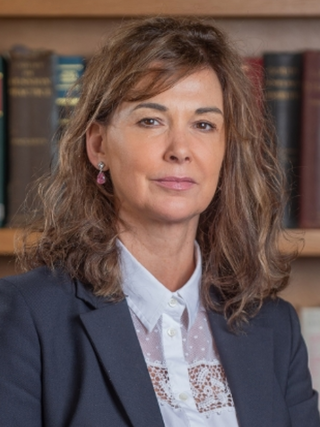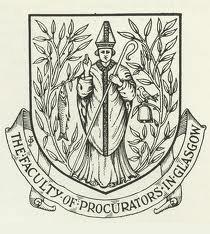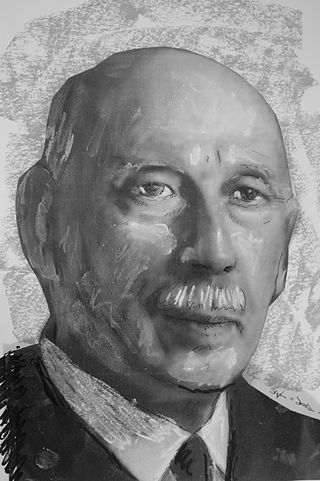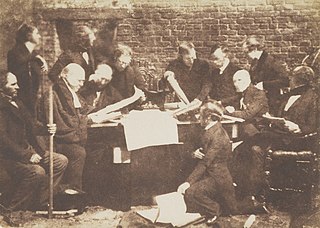
The High Court of Justiciary is the supreme criminal court in Scotland. The High Court is both a trial court and a court of appeal. As a trial court, the High Court sits on circuit at Parliament House or in the adjacent former Sheriff Court building in the Old Town in Edinburgh, or in dedicated buildings in Glasgow and Aberdeen. The High Court sometimes sits in various smaller towns in Scotland, where it uses the local sheriff court building. As an appeal court, the High Court sits only in Edinburgh. On one occasion the High Court of Justiciary sat outside Scotland, at Zeist in the Netherlands during the Pan Am Flight 103 bombing trial, as the Scottish Court in the Netherlands. At Zeist the High Court sat both as a trial court, and an appeal court for the initial appeal by Abdelbaset al-Megrahi.

His Majesty's Advocate, known as the Lord Advocate, is the principal legal adviser of both the Scottish Government and the Crown in Scotland for civil and criminal matters that fall within the devolved powers of the Scottish Parliament. The Lord Advocate provides legal advice to the government on its responsibilities, policies, legislation and advising on the legal implications of any proposals brought forward by the government. The Lord Advocate is responsible for all legal advice which is given to the Scottish Government.

Sir Francis Palgrave, was an English archivist and historian. He was Deputy Keeper of the Public Record Office from its foundation in 1838 until his death; and he is also remembered for his many scholarly publications.

The office of Lord Clerk Register is the oldest remaining Great Officer of State in Scotland, with origins in the 13th century. It historically had important functions in relation to the maintenance and care of the public records of Scotland. Today these duties are administered by the Keeper of the National Records of Scotland and the Keeper of the Registers of Scotland.

Parliament House, located in the Old Town in Edinburgh, Scotland, is a complex of several buildings housing the Supreme Courts of Scotland. The oldest part of the complex was home to the Parliament of Scotland from 1639 to 1707, and is the world's first purpose-built parliament building.

The Faculty of Advocates is an independent body of lawyers who have been admitted to practise as advocates before the courts of Scotland, especially the Court of Session and the High Court of Justiciary. The Faculty of Advocates is a constituent part of the College of Justice and is based in Edinburgh.

Brian Gill, Lord Gill, is a retired Scottish judge and legal academic. He served as Lord President and Lord Justice General from June 2012 until May 2015. Gill previously served as Lord Justice Clerk from 2001 to 2012, and as Chairman of the Scottish Law Commission from 1996 to 2001. As an advocate, he practised principally in agricultural law and is the author of The Law of Agricultural Holdings in Scotland. In 2007–2009, Gill undertook a far-reaching review of the civil courts system in Scotland, recommending a shift of much of the workload of the Court of Session to Scotland's local sheriff courts.

The Law Society of Scotland is the professional governing body for Scottish solicitors. It's goal is to promote excellence among solicitors through the support and regulation of its members. It is also committed to promoting the interests of the public in relation to the profession. The Society seeks to contribute to the shaping of the law for the benefit of both the public and the profession.

The College of Justice includes the Supreme Courts of Scotland, and its associated bodies.

The Scottish Land Court is a Scottish court of law based in Edinburgh with subject-matter jurisdiction covering disputes between landlords and tenants relating to agricultural tenancies, and matters related to crofts and crofters. The Scottish Land Court is both a trial court and an appeal court; hearings at first-instance are often heard by a Divisional Court of one of the Agricultural Members advised by the Principal Clerk. Decisions of the Divisional Court can be appealed to the Full Court, which will consist of at least one legally qualified judicial member and the remaining Agricultural Member. Some cases are heard at first-instance by the Full Court, and these cases may be appealed to the Inner House of the Court of Session.

The Royal Faculty of Procurators in Glasgow is a professional body of legal practitioners based in Glasgow and providing services to lawyers in the city and the surrounding area. The Faculty owns and operates the largest law library in the West of Scotland as well as a small branch library at Glasgow Sheriff Court, and runs a programme of continuing professional development (CPD) seminars.

The judiciary of Scotland are the judicial office holders who sit in the courts of Scotland and make decisions in both civil and criminal cases. Judges make sure that cases and verdicts are within the parameters set by Scots law, and they must hand down appropriate judgments and sentences. Judicial independence is guaranteed in law, with a legal duty on Scottish Ministers, the Lord Advocate and the Members of the Scottish Parliament to uphold judicial independence, and barring them from influencing the judges through any form of special access.

The Principal Clerk of Session and Justiciary is the clerk of court responsible for the administration of the Supreme Courts of Scotland and their associated staff. The Keeper of the Signet grants a commission to the Principal Clerk of Session to allow His Majesty's Signet to be used.
The Society of Advocates in Aberdeen is professional body of legal practitioners based in the city of Aberdeen, Scotland, and its surrounding area.
Sir Ernest MacLagan Wedderburn was a Scottish lawyer, and a significant figure both in the civic life of Edinburgh and in the legal establishment. He held the posts of Professor of Conveyancing in the University of Edinburgh (1922–35), Deputy Keeper of the Signet (1935–54), and Chairman of the General Council of Solicitors (1936–49), the forerunner to the Law Society of Scotland, and chaired the latter 1949/50. He was also an enthusiastic amateur scientist, and first Treasurer then Vice President of the Royal Society of Edinburgh.

Sir William Campbell Johnston FRSE was a Scottish lawyer and noted cricketer.
Colin Mackenzie of Portmore WS FRSE (1770–1830) was a Scottish lawyer and companion of Sir Walter Scott.
William Skinner of Corra WS FRSE DL JP (1823–1901) was a 19th-century Scottish lawyer and author. He was Town Clerk of Edinburgh from 1874 to 1895.
James Thomson Gibson-Craig was a Scottish book collector and writer to the Signet.

James Crawford was a Scottish lawyer and church elder from Edinburgh. After the Disruption of 1843 he sided with the Free Church and was elected Deputy Clerk of the General Assembly of the Free Church of Scotland - a post he held for 20 years. He was also involved in local government and publishing. He served on several Free Church committees and was photographed in this role by Hill & Adamson.












